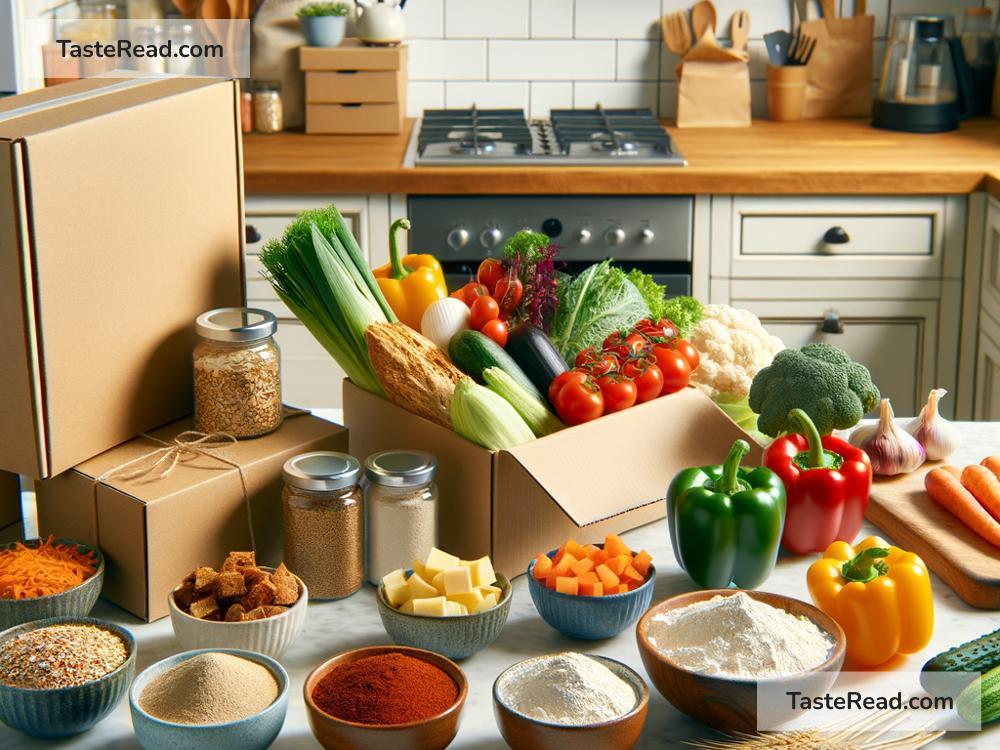Title: A Beginner’s Guide to Developing Gluten-Free Recipes for Meal Subscription Boxes
In the ever-evolving world of meal subscription boxes, offering gluten-free options isn’t just nice—it’s necessary. With a rising awareness of gluten intolerance and celiac disease, more people are leaning towards gluten-free diets not only for health reasons but also for a better lifestyle. If you’re looking to dive into the world of meal subscription boxes and want to cater to this growing demand, developing gluten-free recipes is a critical step. But how do you get started? Let’s break it down into simple, manageable steps.
Understand Gluten-Free Basics
Before you start experimenting in the kitchen, it’s important to understand what gluten-free truly means. Gluten is a protein found in wheat, barley, and rye. For someone following a gluten-free diet, these grains and any products derived from them are off-limits. However, gluten can hide in many unsuspecting places, from sauces and seasonings to malt and certain processed foods.
Educate yourself on safe ingredients and become well-acquainted with reading labels. Familiarize yourself with gluten-free flours like almond, coconut, and rice flour, and understand how they can substitute traditional flour in recipes.
Start with Simple Swaps
One of the easiest ways to develop gluten-free recipes is by starting with dishes that can be easily modified. Think of meals where the gluten component isn’t central to the dish. For example, swapping regular pasta for a gluten-free alternative in a pasta dish or using gluten-free bread for sandwiches. These simple swaps allow you to maintain the integrity of the original dish while making it accessible to those on a gluten-free diet.
Explore Global Cuisines
Some of the world’s cuisines naturally offer many gluten-free dishes. Mexican, Thai, and Indian cuisines, for example, use a variety of rice, corn, and legumes in their recipes, making many of their traditional dishes gluten-free or easily adaptable. Expanding your recipe selection to include global cuisines can not only make your meal subscription boxes more inclusive but also more diverse and exciting.
Innovation in the Kitchen
Developing gluten-free recipes gives you a chance to be creative in the kitchen. Think outside the box and explore alternative grains like quinoa, buckwheat, and millet, which can add interesting textures and flavors to your meals. Experiment with different flour blends to find the perfect combination for baking—often, a mix of gluten-free flours yields the best results.
Remember, gluten-free recipes might require different cooking methods or ingredient ratios, so don’t be afraid to experiment and adjust as you go. Keeping a detailed note of what works and what doesn’t can be incredibly helpful.
Focus on Nutrition
People often mistakenly believe that gluten-free automatically means healthier, but that’s not always the case. When developing your recipes, pay attention to the nutritional content of your meals. A well-balanced meal that includes a good mix of protein, carbohydrates, fats, and fiber is crucial. Incorporate fresh vegetables, fruits, lean meats, and healthy fats to ensure that your gluten-free meals are not only safe to eat but also nutritionally sound.
Feedback is Key
Once you have a selection of recipes ready, testing them is crucial. Gather feedback from people who follow a gluten-free diet, as they can offer valuable insights into the taste, texture, and overall satisfaction with the meal. They can also point out potential cross-contamination issues you might have overlooked. Use this feedback to tweak and perfect your recipes.
Prevent Cross-Contamination
When preparing gluten-free meals, especially in a kitchen that also handles gluten-containing ingredients, preventing cross-contamination is crucial. This can involve dedicated cooking utensils and surfaces, thorough cleaning protocols, and clear labeling. Making sure your meals truly are gluten-free is crucial both for the safety and trust of your customers.
Spread the Word with Engaging Stories
Once you’ve developed your gluten-free recipes, it’s time to let the world know. Use your meal subscription box platform to share the story behind your recipes. Whether it’s your journey of understanding gluten intolerance or the inspiration behind choosing certain dishes, engaging storytelling can make your meal boxes more appealing.
In conclusion, developing gluten-free recipes for meal subscription boxes can open your business to a wider market and cater to the needs of many looking for convenient, safe meal options. With a thoughtful approach, a bit of creativity, and a focus on nutrition and safety, you can create delicious, diverse, and nutritious meals that stand out in the crowded meal subscription market.


